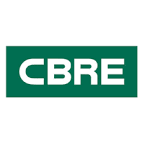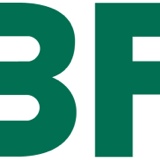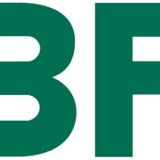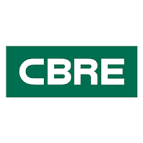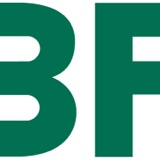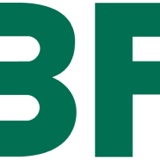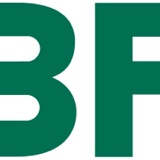Information
-
Document No.
-
Audit Title
-
Client / Site
-
Conducted on
-
Prepared by
-
Location
-
Personnel
Fire Protection & Detection
-
Are all of the facility's fire extinguishers unobstructed, visually inspected monthly & documented on affixed tag?<br>
-
Are smoke detection systems electonically monitored/supervised? Does activation notify facility occupants and site security?<br>
-
Are areas where sprinklers may be subject to freezing provided with adequate heat?<br>
-
Are sprinkler heads free of decorations, attachments, temporary coverings, paint and corrosion?<br>
-
Is storage is maintained at least 18 inches below sprinkler heads so they are effective?<br>
-
Are all temporary covers removed from smoke detectors?<br>
-
Are automatic sprinklers, fire hoses, fire pumps, emergency lighting, and fire evacuation equipment inspected at least annually?<br>
-
Is fire alarm system testing and a PM done at least annually?<br>
-
Are fire extinguishers marked by highly visible standardized signs throughout the whole facility?<br>
-
Is travel distance to the nearest fire extinguisher less than 75 feet? (Note: Extinguisher may not be in the immediate area, may be in a hallway or on the dock.)<br>
Housekeeping
-
Are combustibles (boxes & plastic) stored separately from flammable & combustible liquids?<br>
-
Are alarm panels, fire pull stations, extinguishers, sprinkler risers, sprinkler riser closets, hose cabinets and other monitoring devices free from obstructions?<br>
-
Is trash placed into containers and maintained in an orderly manner?<br>
-
Are waste containers kept out of the walking aisles and egress paths?<br>
-
Are chemicals, equipment, tools and spare parts stored in an orderly manner? <br>
-
Is general housekeeping adequate, in storage areas, sheds, dock, hallways & mechanical rms?<br>
-
Is the general area free from storage of combustible / flammable materials?<br>
-
Is the area free from clutter?<br>
-
Are walking / working paths free of slip and trip hazards?<br>
-
Are oily rags and used oil stored in closed metal containers?<br>
Egress Paths and Exit Doors
Walk all evacuation routes throughout the whole building to answer these questions:
-
Are emergency evacuation route signs posted and current? <br><br>
-
Are exits free of locks or fastening devices that could prevent free escape?<br>
-
Are all exit doors are closed (unless held open with magnetic releases), unobstructed, discharge to a safe area and they close automatically and latch?<br>
-
Is lighting working in corridors, stairways, and exterior exit ways?<br>
-
Are all fire exits clearly marked and illuminated exit signs working?<br>
-
Are exit signs and emergency illumination included in a PM program?<br>
-
Are exit paths and hallways free from storage & unobstructed? (36" minimum width)<br>
-
Test doors at stairways are self-closing and work/close properly.<br>
-
Test exit doors. Ensure they open in a single motion, without using keys, id cards, passwords. <br>
-
Will exit doors fail in an open (unlocked) position during a power failure?<br>
-
Are exit doors and muster points free of snow and ice? Is salt available in winter weather?<br>
Personal Protective Equipment
-
Are safety shoes worn when moving or lifting heavy objects?<br>
-
Are bump caps worn when working in a hazardous area?<br>
-
Are the appropriate gloves worn for chemical handling? Materials handling? Cleaning? Preparing shipments?<br>
-
Is the appropriate clothing worn for electrical safety / arc flash protection?<br>
-
Are safety glasses worn when there is the potential for flying pieces, moving parts, exposure to chemicals, biologicals, radiation, dust<br>
Safety Critical Monitoring
-
Are LEL/O2 (Lower Explosivity Limit / Oxygen) meters functional, calibrated & on PM schedule? If not, put in a work order. <br>
-
Are response procedures posted by LEL/O2 (Lower Explosivity Limit / Oxygen) alarms/meters?<br>
-
Do LEL/O2 (Lower Explosivity Limit / Oxygen) monitors alarm locally and also notify the building BAS system?<br>
Facilities Safety
-
Are emergency procedures posted and up to date?<br>
-
Are utility penetrations in walls, floors and ceilings fire stopped?<br>
-
Is all equipment in good working order?<br>
-
Is all machine guarding in place?<br>
-
Are guards present on belt driven mechanical equipment?<br>
-
Is all hot water and steam piping insulated?<br>
-
Is piping free of leaks?<br>
-
Are ceiling holes patched? Are ceiling tiles in place and in good condition?<br>
-
Have all areas requiring fall protection been identified & has fall protection been implemented?<br>
-
Is general lighting adequate?<br>
Electrical Safety
-
Are there all portable heaters removed from in the area? If heaters are needed are they supplied by Facility Operations?<br>
-
Is there only one plug plugged in per socket (there can be outlet strips, but no multiplug adapters at the wall)?<br>
-
Do battery pack emergency lights & exit signs light when tested (push the button on the box, see if it illuminates)? Note: Some may be hard wired to the bldg. generator<br>
-
Are extension cords kept away from damaging environments? Are they managed so they do not present a trip hazard?<br>
-
Are the cords of all electrical equipment in good condition (ie.not frayed or spliced?)<br>
-
Is there at least 36" of clearance on all sides of electrical panels so they are accessible? <br>
-
Are electrical panels closed and locked and junction boxes covered?<br>
-
Is wiring properly grounded when three prong to two prong adapters are used with cords?<br>
Hazardous Energy Control Procedures (HECP) / Lockout/Tagout
-
Are employees trained on lockout/tagout awareness or as authorized individuals if applicable? <br>
-
Are Hazardous Energy Control Procedures (HECP) posted and followed for PHP equipment?<br>
-
Do employees recognize lockout/tagout hardware (tags and special locks)?<br>
-
Is all Potentially Hazardous Processes (PHP) equipment is on the site PHP list? <br>
Flammable Liquids/Gases and Cylinder Safety
-
Are stored compressed gas cylinders capped?<br>
-
Are there three or less flammable liquid storage cabinets per room or work area?<br>
-
Are cylinders identified with the name of the contents? Do they have "full/in use/empty" tags used on them? Are tags at the correct stage for each cylinder?<br>
-
Do flammable gas cylinders have metal tubing connections?<br>
-
Are flammable liquids stored in approved flammable liquid cabinets or flammable liquid storage rooms?<br>
-
Are containers electrically grounded and bonded where flammable liquids are dispensed? (if >5 gallon containers) (If quick disconnects are used, grounding is not needed.)<br>
-
Ignoring flammable storage cabinets and safety cans in any one room or work area, is the maximum quantity of all other flammable liquids in the area less than 10 gallons (38 liters)? <br>
-
Including flammable storage cabinets and safety cans in any one room or work area, is the maximum quantity of ALL flammable liquids less than 120 gallons (454 liters)? <br>
-
Is the maximum quantity of flammable liquids stored less than the limits posted at the waste room or chemical storage room door?<br>
-
Are flammable storage cabinets vented or bunged if open solvent transfers, open container operations or pouring of solvents occur inside them?<br>
Hazard Communication
-
Do staff know the symptoms associated with exposure to common chemicals they work with?<br>
-
Have all expired chemicals been discarded?<br>
-
Are chemicals stored away from traffic?<br>
-
Is there an up-to-date chemical inventory?<br>
-
Do staff know where to find material safety data sheets (MSDS's) for all commercial compounds handled? If new chemicals were ordered and SDS's were received, have they been forwarded to EH&S?<br>
-
Is there a posting about finding SDS's in the dock and lab general chemical storage areas?<br>
Emergency Equipment
-
Are spill kits available and appropriate for chemicals in the area?<br>
-
If there is a first aid station in the the area being inspected, is the breakable plastic tie through the latch in tact?<br>
-
Are eyewashes unobstructed, flushed on a monthly basis and documented on affixed tag?<br>
-
Are safety showers flushed monthly and documented on affixed tag?<br>
-
Is a safety shower / eyewash located within 100 feet of operations where skin contact or eye splash hazards from chemicals may exist?<br>
-
Do employees in the area have appropriate PPE?<br>
-
Is the area around, in front of, below all emergency equipment or continuous monitoring equipment kept free from storage, chemicals, tools, waste containers, incoming lab items?<br>
Waste
-
Are containers kept closed except when filling?<br>
-
Are all Facility waste materials labeled properly for disposal (eg: batteries, light bulbs, etc.)?<br>
-
Do universal wastes (eg: batteries, light bulbs, oil) have a Universal Waste "Used ____" label affixed to the container?<br>
-
Are all waste containers dated with the date waste was first placed in the container? Are containers removed from the area within 1 year of when waste is first put into the container? <br>
-
Do all lables contain the appropriate information (i.e. date waste first placed in the container, waste description, name, department number, and phone extension)?<br>
Facility Activities and Industrial Hygiene Issues
-
Are there activities with materials movement which you feel are difficult?<br>
-
Are there activities with heavy lifting where ANY of the following is true: you feel the task is difficult, you lift heavy items from the floor, you lift heavy items above shoulder height?<br>
-
Are there areas which are loud where hearing protection is not provided?<br>
Open Action Items from Previous Inspections
-
Are all action items from previous inspections closed out (review previous inspection checklists)?<br>
